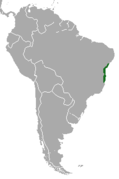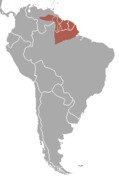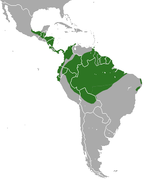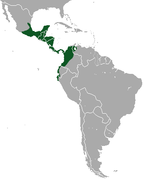J u m p t o c o n t e n t
M a i n m e n u
M a i n m e n u
N a v i g a t i o n
● M a i n p a g e ● C o n t e n t s ● C u r r e n t e v e n t s ● R a n d o m a r t i c l e ● A b o u t W i k i p e d i a ● C o n t a c t u s ● D o n a t e
C o n t r i b u t e
● H e l p ● L e a r n t o e d i t ● C o m m u n i t y p o r t a l ● R e c e n t c h a n g e s ● U p l o a d f i l e
S e a r c h
Search
A p p e a r a n c e
● C r e a t e a c c o u n t ● L o g i n
P e r s o n a l t o o l s
● C r e a t e a c c o u n t ● L o g i n
P a g e s f o r l o g g e d o u t e d i t o r s l e a r n m o r e ● C o n t r i b u t i o n s ● T a l k
( T o p )
1 C o n v e n t i o n s
2 C l a s s i f i c a t i o n
3 P i l o s a n s
T o g g l e P i l o s a n s s u b s e c t i o n
3 . 1 S u b o r d e r F o l i v o r a
3 . 1 . 1 B r a d y p o d i d a e
3 . 1 . 2 C h o l o e p o d i d a e
3 . 2 S u b o r d e r V e r m i l i n g u a
3 . 2 . 1 C y c l o p e d i d a e
3 . 2 . 2 M y r m e c o p h a g i d a e
4 R e f e r e n c e s
5 S o u r c e s
T o g g l e t h e t a b l e o f c o n t e n t s
L i s t o f p i l o s a n s
A d d l a n g u a g e s
A d d l i n k s
● A r t i c l e ● T a l k
E n g l i s h
● R e a d ● E d i t ● V i e w h i s t o r y
T o o l s
T o o l s
A c t i o n s
● R e a d ● E d i t ● V i e w h i s t o r y
G e n e r a l
● W h a t l i n k s h e r e ● R e l a t e d c h a n g e s ● U p l o a d f i l e ● S p e c i a l p a g e s ● P e r m a n e n t l i n k ● P a g e i n f o r m a t i o n ● C i t e t h i s p a g e ● G e t s h o r t e n e d U R L ● D o w n l o a d Q R c o d e ● W i k i d a t a i t e m
P r i n t / e x p o r t
● D o w n l o a d a s P D F ● P r i n t a b l e v e r s i o n
A p p e a r a n c e
F r o m W i k i p e d i a , t h e f r e e e n c y c l o p e d i a
Species in mammal order Pilosa
Pilosa species of different families; from top-left, clockwise: silky anteater (Cyclopes didactylus ), giant anteater (Myrmecophaga tridactyla ), pale-throated sloth (Bradypus tridactylus ), Linnaeus's two-toed sloth (Choloepus didactylus )
Pilosa is an order of placental mammals . Members of this order are called pilosans, and include anteaters and sloths . They are found in South and Central America, generally in forests, though some species are found in shrublands , grasslands , and savannas . Pilosans primarily eat insects and leaves. They range in size from the silky anteater , at 36 cm (14 in ) plus a 18 cm (7 in ) tail, to the giant anteater , at 120 cm (47 in ) plus a 90 cm (35 in ) tail. No pilosans have population estimates, but the pygmy three-toed sloth is categorized as critically endangered .
The twelve extant species of Pilosa are divided into two suborders : Folivora , the sloths, and Vermilingua , the anteaters. Folivora contains two families : Bradypodidae , containing four species in one genus ; and Choloepodidae , containing two species in one genus. Vermilingua also contains two families: Cyclopedidae , containing a single species, and Myrmecophagidae , containing three species in two genera. Dozens of extinct prehistoric pilosan species have been discovered, though due to ongoing research and discoveries the exact number and categorization is not fixed.[1]
Conventions [ edit ]
Conservation status codes listed follow the International Union for Conservation of Nature (IUCN) Red List of Threatened Species . Range maps are provided wherever possible; if a range map is not available, a description of the pilosan's range is provided. Ranges are based on the IUCN Red List for that species unless otherwise noted. All extinct species or subspecies listed alongside extant species went extinct after 1500 CE, and are indicated by a dagger symbol "†".
Classification [ edit ]
The order Pilosa consists of twelve extant species in two suborders : Folivora , the sloths, and Vermilingua , the anteaters. Folivora contains two families : Bradypodidae , containing four species in one genus ; and Choloepodidae , containing two species in one genus. Vermilingua also contains two families: Cyclopedidae , containing a single species, and Myrmecophagidae , containing three species in two genera. Many of these species are further subdivided into subspecies. This does not include hybrid species or extinct prehistoric species.
Suborder Vermilingua
Pilosans [ edit ]
The following classification is based on the taxonomy described by the reference work Mammal Species of the World molecular phylogenetic analysis , as supported by both the IUCN and the American Society of Mammalogists .[4]
Suborder Folivora [ edit ]
Bradypodidae [ edit ]
Genus Bradypus Linnaeus , 1758
Common name
Scientific name and subspecies
Range
Size and ecology
IUCN status and estimated population
Brown-throated sloth
B. variegatus Schinz , 1825
B. v. boliviensis
B. v. brasiliensis
B. v. ephippiger
B. v. gorgon
B. v. infuscatus
B. v. trivittatus
B. v. variegatus
Central America and northern South America
Size : 42–80 cm (17–31 in ) long, plus 2–9 cm (1–4 in ) tail[5] Habitat : Forest[6] Diet : Leaves, flowers, and fruit of Cecropia [7] LC
[6]
Maned sloth
B. torquatus Illiger , 1811Eastern South America
Size : 45–50 cm (18–20 in ) long, plus 4–5 cm (2 in ) tail[8] Habitat : Forest[9] Diet : Leaves[8] VU
[9]
Pale-throated sloth
B. tridactylus Linnaeus , 1758Northern South America
Size : 45–75 cm (18–30 in ) long, plus 4–6 cm (2 in ) tail[10] Habitat : Forest[11] Diet : Twigs, buds, and leaves of Cecropia trees[12] LC
[11]
Pygmy three-toed sloth
B. pygmaeus Anderson , Handley , 2001Isla Escudo de Veraguas in Panama Size : 48–53 cm (19–21 in ) long, plus 4–6 cm (2 in ) tail[13] Habitat : Forest[14] Diet : Leaves[15] CR
[14]
Choloepodidae [ edit ]
Genus Choloepus Illiger , 1811
Common name
Scientific name and subspecies
Range
Size and ecology
IUCN status and estimated population
Hoffmann's two-toed sloth
C. hoffmanni Peters , 1858
C. h. capitalis
C. h. florenciae
C. h. hoffmanni
C. h. juruanus
C. h. pallescens
Central America and northern and western South America
Size : 54–72 cm (21–28 in ) long, plus 1–3 cm (1 in ) tail[16] Habitat : Forest, shrubland, and grassland[17] Diet : Leaves, as well as buds, twigs, shoots, fruits, and flowers[18] LC
[17]
Linnaeus's two-toed sloth
C. didactylus (Linnaeus , 1758)
Northern South America
Size : 60–86 cm (24–34 in ) long, plus 1–2 cm (1 in ) tail[19] Habitat : Forest[20] Diet : Berries, leaves, small twigs, and fruit, as well as insects[21] LC
[20]
Suborder Vermilingua [ edit ]
Cyclopedidae [ edit ]
Genus Cyclopes Gray , 1821
Common name
Scientific name and subspecies
Range
Size and ecology
IUCN status and estimated population
Silky anteater
C. didactylus (Linnaeus , 1758)
C. d. catellus
C. d. didactylus
C. d. dorsalis
C. d. eva
C. d. ida
C. d. melini
C. d. mexicanus
Central America and northern and eastern South America
Size : 36–45 cm (14–18 in ) long, plus 18–27 cm (7–11 in ) tail[22] Habitat : Forest[23] Diet : Ants and termites[24] LC
[23]
Myrmecophagidae [ edit ]
Genus Myrmecophaga Linnaeus , 1758
Common name
Scientific name and subspecies
Range
Size and ecology
IUCN status and estimated population
Giant anteater
M. tridactyla Linnaeus , 1758
M. t. artata
M. t. centralis
M. t. tridactyla
Central America and South America (former range in red)
Size : 100–120 cm (39–47 in ) long, plus 65–90 cm (26–35 in ) tail[25] Habitat : Forest, savanna, shrubland, and grassland[26] Diet : Ants, termites, and soft-bodied grubs[25] VU
[26]
Genus Tamandua Gray , 1825
Common name
Scientific name and subspecies
Range
Size and ecology
IUCN status and estimated population
Northern tamandua
T. mexicana (Saussure , 1860)
T. m. instabilis
T. m. mexicana
T. m. opistholeuca
T. m. punensis
Central America and northern South America
Size : 47–77 cm (19–30 in ) long, plus 40–68 cm (16–27 in ) tail[27] Habitat : Forest and savanna[28] Diet : Ants and termites[27] LC
[28]
Southern tamandua
T. tetradactyla (Linnaeus , 1758)
T. t. nigra
T. t. quichua
T. t. straminea
T. t. tetradactyla
South America
Size : 53–88 cm (21–35 in ) long, plus 40–59 cm (16–23 in ) tail[29] Habitat : Forest, savanna, and shrubland[30] Diet : Ants and termites, as well as bees and honey[30] LC
[30]
References [ edit ]
^ Presslee, S.; Slater, G. J.; Pujos, F.; Forasiepi, A. M.; Fischer, R.; Molloy, K.; Mackie, M.; Olsen, J. V.; Kramarz, A.; Taglioretti, M.; Scaglia, F.; Lezcano, M.; Lanata, J. L.; Southon, J.; Feranec, R.; Bloch, J.; Hajduk, A.; Martin, F. M.; Gismondi, R. S.; Reguero, M.; de Muizon, C.; Greenwood, A.; Chait, B. T.; Penkman, K. ; Collins, M.; MacPhee, R.D.E. (2019). "Palaeoproteomics resolves sloth relationships" (PDF) . Nature Ecology and Evolution 3 7 ): 1121–1130. doi :10.1038/s41559-019-0909-z . PMID 31171860 . S2CID 174813630 .
^ Gibb, G. C.; Condamine, F. L.; Kuch, M.; Enk, J.; Moraes-Barros, N.; Superina, M.; Poinar, H. N.; Delsuc, F. (2015). "Shotgun Mitogenomics Provides a Reference PhyloGenetic Framework and Timescale for Living Xenarthrans" . Molecular Biology and Evolution 33 3 ): 621–642. doi :10.1093/molbev/msv250 . PMC 4760074 PMID 26556496 .
^ Wilson, Reeder , pp. 100–103
^ Hayssen, V. (2010). "Bradypus variegatus (Pilosa: Bradypodidae)" . Mammalian Species 42 doi :10.1644/850.1
^ a b Moraes-Barros, N.; Chiarello, A.; Plese, T.; Santos, P.; Aliaga-Rossel, E.; Aguilar Borbón, A.; Turcios Casco, M. (2022). "Bradypus variegatus " . IUCN Red List of Threatened Species 2022 : e.T3038A210442893.
^ Jung, Hee-Jin (2011). "Bradypus variegatus " . Animal Diversity Web University of Michigan . Retrieved May 3, 2023 .
^ a b Bullinger, Brady (2009). "Bradypus torquatus " . Animal Diversity Web University of Michigan . Retrieved May 3, 2023 .
^ a b Chiarello, A.; Santos, P.; Moraes-Barros, N.; Miranda, F. (2022). "Bradypus torquatus " . IUCN Red List of Threatened Species 2022 : e.T3036A210442361.
^ Hayssen, V. (2009). "Bradypus tridactylus (Pilosa: Bradypodidae)" (PDF) . Mammalian Species doi :10.1644/839.1 S2CID 85870343 .
^ a b Pool, M.; De Thoisy, B.; Moraes-Barros, N.; Chiarello, A. (2022). "Bradypus tridactylus " . IUCN Red List of Threatened Species 2022 : e.T3037A210442660.
^ Hughes, Kelly (2023). "Bradypus tridactylus " . Animal Diversity Web University of Michigan . Retrieved May 3, 2023 .
^ Anderson, R. P.; Handley Jr., C. O. (2001). "A new species of three-toed sloth (Mammalia: Xenarthra) from Panama, with a review of the genus Bradypus ". Proceedings of the Biological Society of Washington 114 (1 ): 1–33 .
^ a b Smith, D.; Voirin, B.; Chiarello, A.; Moraes-Barros, N. (2022). "Bradypus pygmaeus " . IUCN Red List of Threatened Species 2022 : e.T61925A210445926.
^ Guarino, Farryn (2009). "Bradypus pygmaeus " . Animal Diversity Web University of Michigan . Retrieved May 3, 2023 .
^ Gilmore, D. P.; Da Costa, C. P.; Duarte, D. P. F. (January 2001). "Sloth biology: an update on their physiological ecology, behavior and role as vectors of arthropods and arboviruses" . Brazilian Journal of Medical and Biological Research 34 1 ): 9–25. doi :10.1590/s0100-879x2001000100002 PMID 11151024 .
^ a b Plese, T.; Chiarello, A.; Turcios Casco, M.; Aguilar Borbón, A.; Santos, P.; Aliaga-Rossel, E.; Moraes-Barros, N. (2022). "Choloepus hoffmanni " . IUCN Red List of Threatened Species 2022 : e.T4778A210443596.
^ Apostolopoulos, Vicky (2010). "Choloepus hoffmanni " . Animal Diversity Web University of Michigan . Retrieved May 3, 2023 .
^ Eisenberg, Redford, Reid, Bonner (vol. 3) , p. 97
^ a b Chiarello, A.; Plese, T.; De Thoisy, B.; Pool, M.; Aliaga-Rossel, E.; Santos, P.; Moraes-Barros, N. (2022). "Choloepus didactylus " . IUCN Red List of Threatened Species 2022 : e.T4777A210443323.
^ Felton-Church, Ali (2000). "Choloepus didactylus " . Animal Diversity Web University of Michigan . Retrieved May 3, 2023 .
^ Eisenberg, Redford, Reid, Bonner (vol. 3) , p. 91
^ a b Miranda, F.; Meritt, D. A.; Tirira, D. G.; Arteaga, M. (2014). "Cyclopes didactylus " . IUCN Red List of Threatened Species 2014 : e.T6019A47440020. doi :10.2305/IUCN.UK.2014-1.RLTS.T6019A47440020.en
^ Schober, Megan (2023). "Cyclopes didactylus " . Animal Diversity Web University of Michigan . Retrieved May 2, 2023 .
^ a b Woltanski, Amy (2004). "Myrmecophaga tridactyla " . Animal Diversity Web University of Michigan . Retrieved May 3, 2023 .
^ a b Miranda, F.; Bertassoni, A.; Abba, A. M. (2014). "Myrmecophaga tridactyla " . IUCN Red List of Threatened Species 2014 : e.T14224A47441961. doi :10.2305/IUCN.UK.2014-1.RLTS.T14224A47441961.en
^ a b Harrold, Andria (2007). "Tamandua mexicana " . Animal Diversity Web University of Michigan . Retrieved May 3, 2023 .
^ a b Ortega Reyes, J.; Tirira, D. G.; Arteaga, M.; Miranda, F. (2014). "Tamandua mexicana " . IUCN Red List of Threatened Species 2014 : e.T21349A47442649. doi :10.2305/IUCN.UK.2014-1.RLTS.T21349A47442649.en
^ Gorog, Antonia (2023). "Tamandua tetradactyla " . Animal Diversity Web University of Michigan . Retrieved May 3, 2023 .
^ a b c Miranda, F.; Fallabrino, A.; Arteaga, M.; Tirira, D. G.; Meritt, D. A.; Superina, M. (2014). "Tamandua tetradactyla " . IUCN Red List of Threatened Species 2014 : e.T21350A47442916. doi :10.2305/IUCN.UK.2014-1.RLTS.T21350A47442916.en
Sources [ edit ]
Gardner, Alfred L. (2005). Wilson, Don E. ; Reeder, DeeAnn M. (eds.). Mammal Species of the World Johns Hopkins University Press . ISBN 978-0-8018-8221-0
t
e
By class
By subclass or infraclass
By order
Afrosoricids (golden moles, otter shrews, and tenrecs)
Artiodactyls (even-toed ungulates)
Bats
Carnivorans (carnivores)
Cingulates (armadillos)
Dasyuromorphs (quolls, dunnarts, and other Australian carnivores)
Didelphimorphs (opossums)
Diprotodonts (kangaroos, possums, and wombats)
Eulipotyphlans (hedgehogs, moles, and shrews)
Lagomorphs (hares, rabbits, and pikas)
Macroscelids (elephant shrews)
Peramelemorphs (bandicoots and bilbies)
Perissodactyls (odd-toed ungulates)
Pilosans (anteaters and sloths)
Primates
Rodents
Scandentians (treeshrews)
By suborder or family
By species
R e t r i e v e d f r o m " https://en.wikipedia.org/w/index.php?title=List_of_pilosans&oldid=1215598111 " C a t e g o r i e s : ● P i l o s a n s ● L i s t s o f a n i m a l s p e c i e s ● L i s t s o f p l a c e n t a l m a m m a l s H i d d e n c a t e g o r i e s : ● C i t e I U C N w i t h o u t d o i ● A r t i c l e s w i t h s h o r t d e s c r i p t i o n ● S h o r t d e s c r i p t i o n m a t c h e s W i k i d a t a ● F e a t u r e d l i s t s ● C S 1 : l o n g v o l u m e v a l u e
● T h i s p a g e w a s l a s t e d i t e d o n 2 6 M a r c h 2 0 2 4 , a t 0 2 : 1 2 ( U T C ) . ● T e x t i s a v a i l a b l e u n d e r t h e C r e a t i v e C o m m o n s A t t r i b u t i o n - S h a r e A l i k e L i c e n s e 4 . 0 ;
a d d i t i o n a l t e r m s m a y a p p l y . B y u s i n g t h i s s i t e , y o u a g r e e t o t h e T e r m s o f U s e a n d P r i v a c y P o l i c y . W i k i p e d i a ® i s a r e g i s t e r e d t r a d e m a r k o f t h e W i k i m e d i a F o u n d a t i o n , I n c . , a n o n - p r o f i t o r g a n i z a t i o n . ● P r i v a c y p o l i c y ● A b o u t W i k i p e d i a ● D i s c l a i m e r s ● C o n t a c t W i k i p e d i a ● C o d e o f C o n d u c t ● D e v e l o p e r s ● S t a t i s t i c s ● C o o k i e s t a t e m e n t ● M o b i l e v i e w













